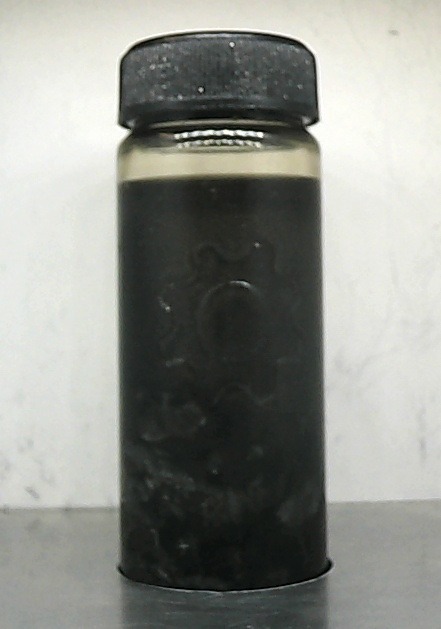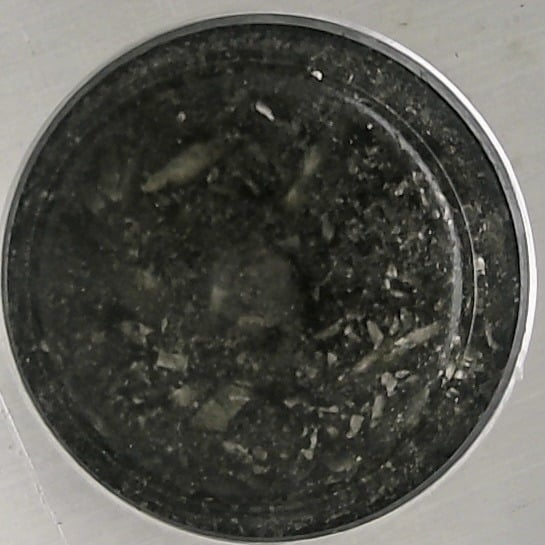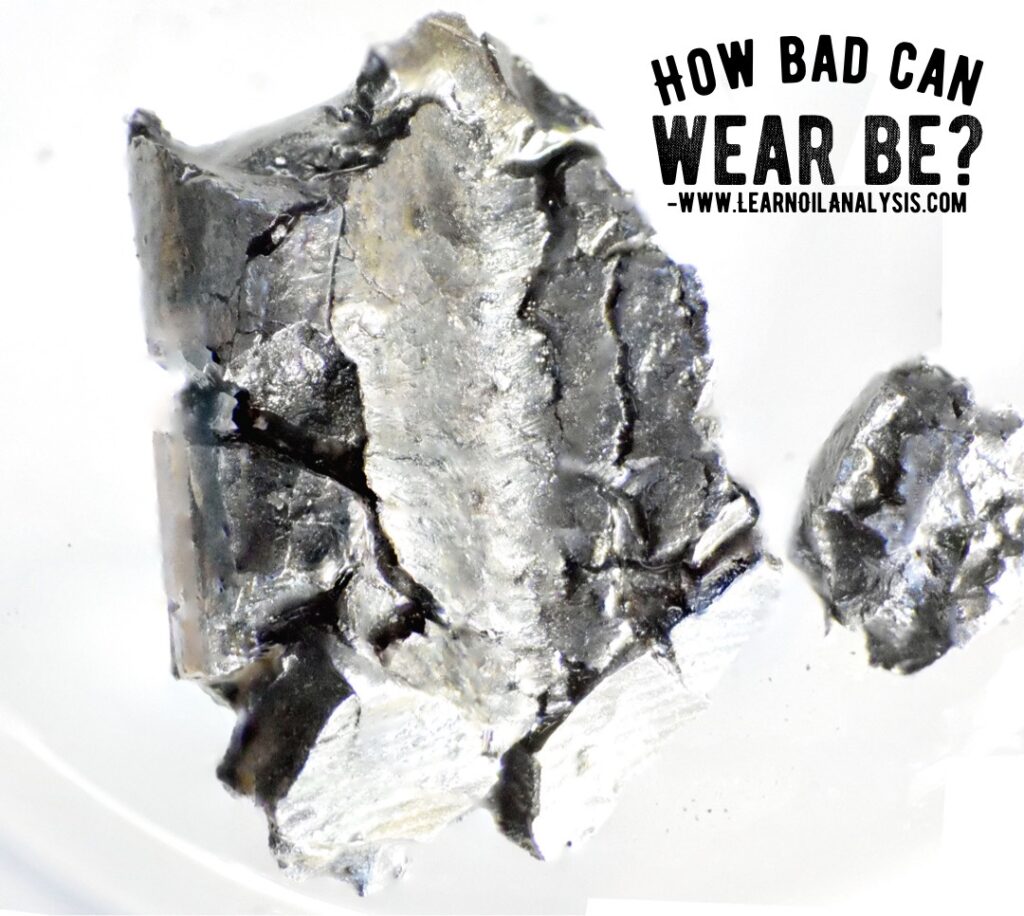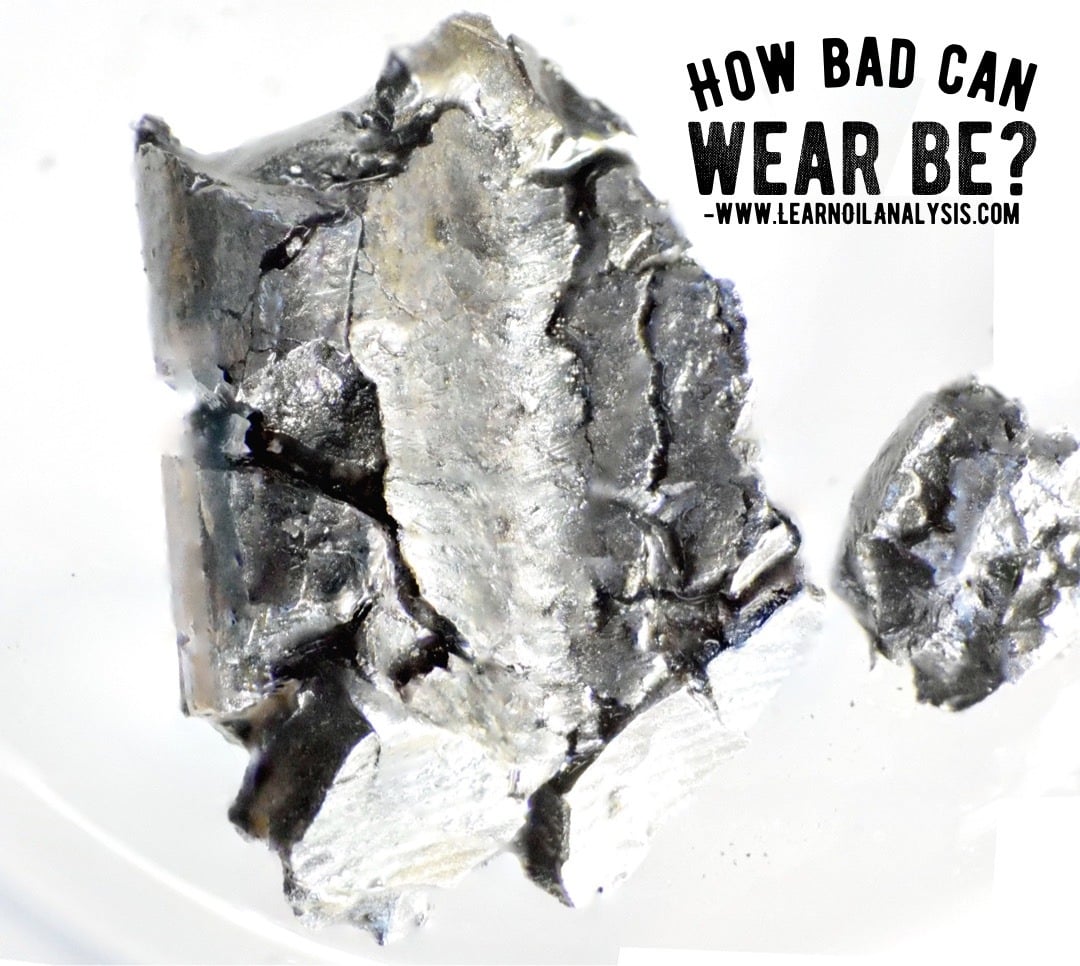The other day in the lab I was asked to pick up this sample bottle on the desk from a truck engine oil. Normally it’s one of the lab team asking my opinion on something to do with the sample. However, this time it was to see my reaction. I picked up the sample and had to tighten my grip as it was very heavy, which surprised me. The closest thing I could describe is when you have those magic trick baked bean tins one full of air and one full of lead. I looked at the sample closer and saw the sample was full of metal. If you look at the picture below you can see there is a layer of debris almost up to the cog mark on the bottle.

You can see this is metal on the underside photo of the bottle too.

Although I didn’t necessarily need a microscope for this sample owing to the size of the material I took some of the material and put it under the microscope which showed it was almost entirely fatigue wear. I explain more about fatigue wear in some of my previous articles which you can search through on my blog.

Can you feel wear?
Since this bottle was actually heavy from the amount of metal in the bottle this made me think was there any basis to the following myth. That is you can tell if an oil needs changing by rubbing the oil off the dipstick between your fingers. If it feels gritty you change the oil.
In the case of this sample you can see the particles and certainly could pick them up with your fingers. The microscope pictures are based on particles I dug out with some tweezers. So you can definitely feel them.
However, the problem comes in that to feel an oil in your fingers you need it to be cold so you don’t burn yourself. This means anything of magnitude will have dropped to the bottom of the sump whilst cooling beneath where you put the dipstick in your engine. So these great big bits wouldn’t be in the middle of your sump. Even if they were, the oil wouldn’t be viscous enough to make large particles adhere to the thin film of oil on a dipstick. So the question still remained could some smaller particles be felt instead.
How small can we feel ?
According to various sources human fingers can feel a surface imperfection down to as little as 15nm 15/1000th of a micron or 15/1000000th of a mm. This sounds promising, but unfortunately the way the test is it is performed is usually with a finger nail over a smooth surface to find an imperfection. However the film thickness of a lubricant can be 10 to 25 micron at operating temperature and normal loading on a crank shaft bearing. When the oil is cold the viscosity and film thickness increases. Equally, the pressure of your fingers will be nowhere near the pressures in your machinery. So the film thickness will likely overwhelm these imperfection detection limits.
So I shook the sample up and left it 20 minutes (assuming this would be how long it takes for the oil to be cool enough to touch). The surface oil looked like metallic paint. I measured these particles and they were between 30 and 80 microns. Normal wear is 15 microns so this is well into the red zone for wear particles anyway. So I tried to feel and sadly nothing. I did have rubber gloves on, but still I think the visual appearance would be a better indicator than the feel for this test.
I did a bit more testing going deeper down the bottle and it wasn’t until around 100 to 150 microns I could feel confidently with rubber gloves on with a 15W40 engine oil even a slight grittiness. I think as an oil got more sooty, oxidised or thicker this would become even more difficult.
Conclusion?
You certainly can feel big wear particles and if your machinery is in a very sorry state you can even pick them up. If you can measure the wear in your sample with a set of scales you also have problems.
All this comes down to why are you feeling in the first place. I assume it would be to see if the engine is in good condition or not. Unfortunately by the time you can feel the particles it is likely too late. You equally need to know the big and small numbers of particles so you can determine how much abnormal wear is present and corrective actions. Equally you also benefit from the 60 odd tests in your analysis report explaining the chemical makeup of wear and the oil condition.
Interestingly this sample had 302,084ppm (30%) wear metal with our proprietary LubeWear method. The standard ICP elemental analysis performed by all other labs that only detects normal wear gave 408ppm – this is still high, but shows how the sample is badly skewed towards abnormal wear. In reality the customer should have been intervening when the value for LubeWear was over 150ppm and the standard elemental was likely 50 to 100ppm. Hence if you want early detection of problems there is no substitute for an oil sample.
If you found this article interesting and would like to test the condition of your oil then contact us below by clicking the button at the bottom right of the screen.


